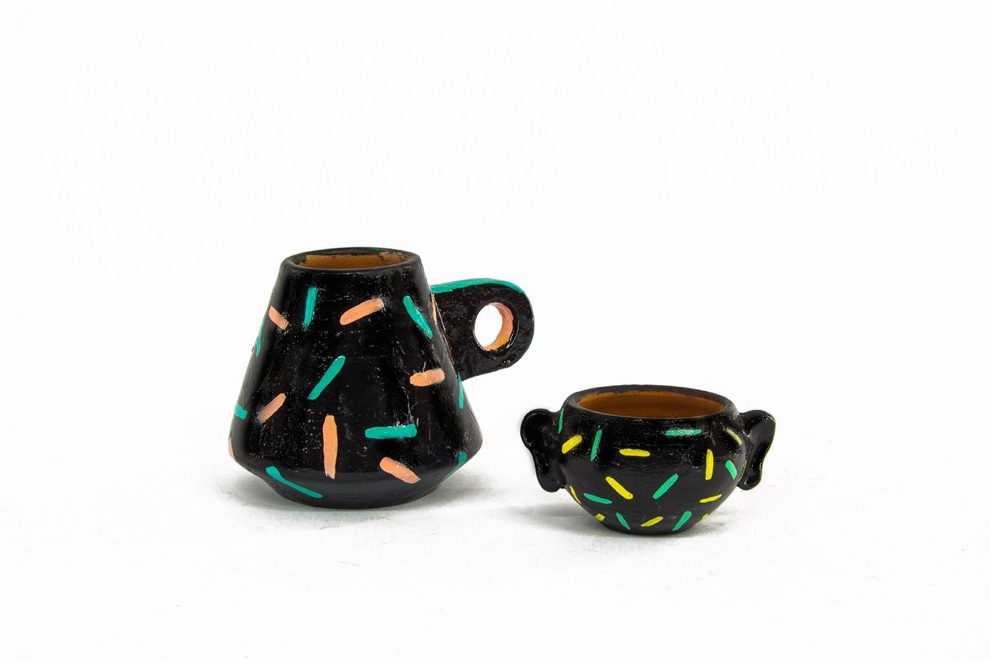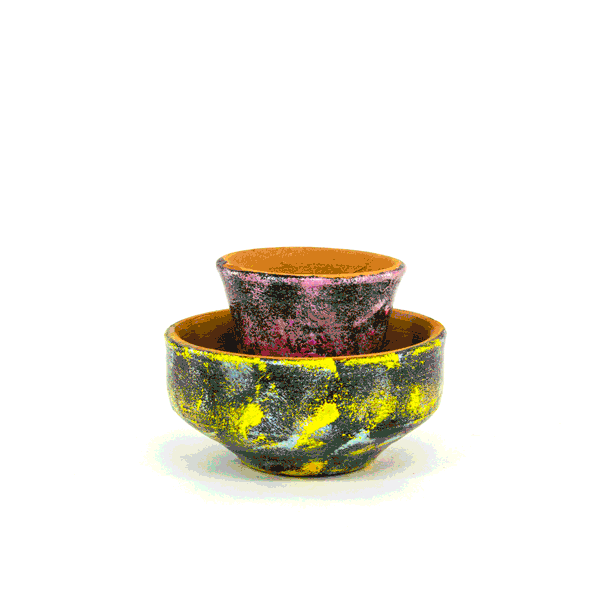NEW AESTHETICS
Design Museum Dharavi’s first exhibition featured ceramic pieces made by the Chauhan family, who run a pottery workshop in Dharavi that goes back four generations. They are extremely skilled and whatever comes out of their hands shows great craftsmanship. Our first collection consists of more than 50 small cups, mugs and saucers that reimagined new ways to drink chai tea, one of Dharavi’s favourite and more authentic activities. Using well-known and simple shapes as a starting point, quickly new ideas and products started to develop while working with the Chauhan family. The combination of a small cup and a diya-shaped saucer (a diya is a typical Indian oil lamp) makes pouring the spilled chai from the saucer back again into the cup way more easier. A cup with a broad base, smaller rim and oversized handles makes drinking hot tea easier for both the oldest and youngest. These and many other new typologies and designs inspired us to explore new aesthetics as well, so we decided to go in the opposite direction that the potters usually follow to decorate their pieces, which usually demands a lot of time and very intricate and complex decorative motifs. Once baked, the pieces were painted following a more instinctive and free approach, creating colourful and playful patterns. The looks of these pieces are completely different from the more intricate traditional Indian styles, yet they represented the colourful identity inherent from Dharavi. However, forms always followed function.


A similar process happened when local potters redesigned water containers, an object that is widely used in Dharavi, in the shape of a short and bulky vessel. Our new collection of water containers was inspired by the way the Chauhans stack pieces in their workshop (where space is precious). We decided to use that same principle to create taller water containers, mixing shapes that already existed in the workshop, and stacking them together as one piece. Later on, the water containers were painted in a way that each component has a different colour, resulting in a completely new and eye-catching artefact never seen before in Dharavi. We wanted to use colour in a similar way that people do in Dharavi to paint their homes, doors, courtyard etc, employing colour in a more ‘massive’ and basic way. It’s quite interesting that some people pointed a resemblance between these pieces and the work of Memphis and Ettore Sottsass in particular. Sottsass’ work was heavily influenced by India and its colourful architecture as well, and somehow we feel those influences came back home through these pieces.









